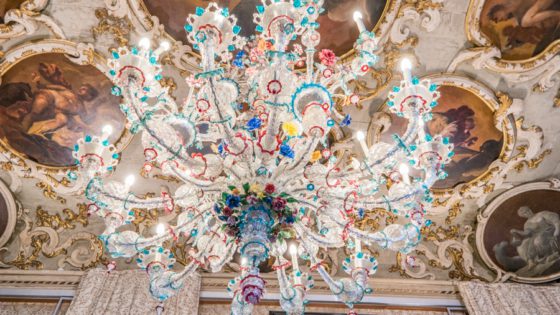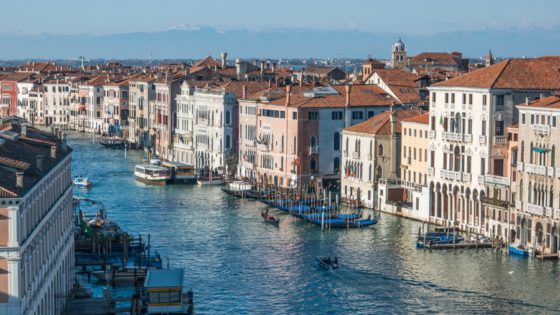Venice and its Lagoon
If you’ve heard about Venice before, you know it already: Venice is beautiful!
Everyone says that, and it’s hard to disagree, right?
Unfortunately, many people also say that Venice is beautiful and that one day is enough to see it all.
That would be quite a mistake, trust us! Probably, the biggest mistake you could do when visiting Venice.
And for that reason, we’ve created a series of articles to help you avoid making such an error and stay a few days instead.
As for many things, the best way to appreciate something is to start by understanding it.
If, however, you’d like to quickly find out why you shouldn’t come just for a day trip, jump to “reasons to stay more than one day”
A 2-minute history of Venice:
As most people know, Venice is a small city island in the north-east of Italy, surrounded entirely by water.
Despite its small size, however, this city was the former capital of the longest-lasting State in history: the Serenissima Repubblica di Venezia (696 C.E. – 1796 C.E.), the “most serene Republic of Venice”.
Previously, we described Venice as a city-island, but it would be more correct to call it a city-archipelago. In fact, Venice was built on 118 small islands very close to each other and measuring a total of 8 square kilometres.
Every island had a few houses and at least one well to collect drinkable water. As a consequence, to cross the water and access other islands, Venetians would always have to use a boat.
Initially, to make it easier to cross from one island to another, locals built flat bridges that could easily be crossed also with carts.
Over time, however, the Government of Venice developed trade routes that made it a mighty city of maritime trades. So, the use of boats and ships grew, too.
As a consequence, Venetians decided to replace flat bridges with arched ones that made it easier for boats to navigate throughout the entire city as well.
Through outstanding leadership, a very efficient and strict system of checks and balances, innovations, industrial secrets, and the integration of people in the local community regardless of skin colour or religion, Venice quickly transformed itself. It went from being a small city of fishermen to being a superpower in the European continent, albeit being hundreds of times smaller than its competitors.
related: how Venice became the longest-lasting state in history
But while the Venetians and the Venetian Government deserve great merits for the lasting success of their city, nothing would have been possible without the Lagoon of Venice.
We don’t mean that such a success wouldn’t have been possible without having access to the sea. We mean more than that: we’re saying that without the Venetian Lagoon, the success of Venice would have been impossible.
The Venetian Lagoon, a 1-minute read:
The Lagoon of Venice is a big surface of water measuring 550 square kilometres and connected to the Adriatic Sea via 3 wide and deep channels.
The Lagoon has hundreds of sandbars, inhabited and not inhabited islands and, almost exactly in its centre, is Venice.
However, although the depth of the Lagoon can vary from just a few centimetres to several meters, average depth has always been very shallow. Indeed, until the beginning of the 20th Century, its average depth has been roughly just 40cm.
As you might have guessed by now, we’re mentioning this characteristic of the Venetian Lagoon because it mattered, a lot. Indeed, the shallow depth of the Venetian Lagoon, is just what made the success of Venice possible!
The shallow depths of the waters of the Venetian Lagoon, in fact, offered Venetians:
1 – A rich and safe fishing and hunting ground for the local community. Rocky waters? Never heard of them!
2 – An ideal environment to “cultivate” salt, one of the most precious commodities in ancient times. All Venetians had to do was to find a very shallow area of the Lagoon, isolate it, let the sun dry the seawater, and collect and ship the salt. For centuries, the Lagoon made for an easy, lucrative, competition-free, and never-ending source of income!
3 – An impenetrable defense. Unlike most ancient cities, Venice never had any walls. The shallow waters of the Lagoon, in fact, made the access to Venice impossible for approaching enemy ships. Moreover, Venice created the first Arsenal in the world based on an assembly-line approach centuries before the rest of the world. A city with an impenetrable defence and the ability to build warships faster than anyone else? Hmmm… maybe there are easier targets out there
related: The Arsenale di Venezia, the first industry in the world
Now that we’ve given you an introduction to Venice and its Lagoon, let’s answer this simple question:
Reasons to stay more than one day in Venice
Why should you stay in Venice longer than one day?
You and we both know that, when visiting Venice, it is almost mandatory to go to Saint Mark’s Square, the most famous area of Venice.
There, art and history lovers (and Instagrammers, too) could keep themselves busy for weeks admiring and visiting the Saint Mark’s Basilica, the Clock Tower, the Bell Tower, the Doge’s Palace, the Procuratie and Napoleonic Wings, the Marciana Library, the Bridge of Sighs and the Prisons, and the Royal Gardens.
All this is comprised in a small area measuring just 275 by 165 meters! This part of Venice with such high density of landmarks is known as Area Monumentale, “monumental area”, and is absolutely worth your time!
However, if one person would stay just a day, it would barely be enough time to look around Saint Mark’s, visit the Basilica, and maybe one of the museums. If the city was not too busy, perhaps a quick stop at the Rialto bridge is possible before heading back home.
That surely sounds lovely, doesn’t it?
Well, yes, there is no doubt Saint Mark’s is mindblowing!
However, it is also a tiny space you will be sharing with up to hundreds of thousands other visitors during peak months.
For the same reasons, it is also an area that locals avoid and, consequently, so do local businesses that are not targeting tourists exclusively.
But isn’t that the historical centre of Venice? No, that is the monumental area of Venice. All of Venice is a historical city, “città storica”, and its beautiful churches, palaces, museums and noteworthy sites are scattered throughout the city.
Just to give you an example, across its six districts Venice counts:
139 churches (88 of which are serving mass weekly)
391 bridges
182 named canals
2650 alleys, measuring a total of 157km!
23 major Museums
and hundreds of Palazzi (109 in the district of Cannaregio alone!)
All this is just in Venice, in its 8 square kilometres.
To see every corner of Venice, one would clearly need a lifetime.
Therefore, here’s one recommendation and a list of some of our favourite museums, bridges, and squares beyond Saint Mark’s area:
Tip: although renowned Venetian Palazzi are everywhere around Venice, many of them are on the Grand Canal. A great way to have a quick overview of the beauty and the variety of Venetian architecture is to take a ride on the Grand Canal.
Either on a public transport boat “vaporetto”, on a water taxi or on a gondola.
Favourite Museums: Ca’ Rezzonico, Palazzo Mocenigo, Ca’ D’Oro, Palazzo Grimani, Punta della Dogana, and Peggy Guggenheim
Bridges we love: Ponte di Rialto (obviously!), Ponte delle Guglie (amazing sunsets), Ponte dell’Accademia (amazing views of the Grand Canal), Ponte dei Pugni in the district of Dorsosuro, and Ponte del Megio.
Delightful Squares: Campo San Giacomo dell’Orio, Campo San Boldo, Campo San Polo, Campo del Ghetto (the Jewish Ghetto)
Extra: Via Garibaldi in Castello, San Giovanni Evangelista, the Grand Canal
Venice, however, is not just about sights. Over its 1.100 years of independence (and great wealth), Venice developed in unique ways. Luckily, much of this uniqueness still exists today, and you will be able to appreciate it if you visit the city beyond Saint Mark’s!
Venice developed its own cuisine and recipes, of course. Staying longer will give you the chance to try more of its delicious dishes: squid risotto with black ink, baccalà mantecato (creamy codfish), and sarde in saor (sardines marinated in onions and sweet vinegar).
Venice, however, developed also a very peculiar and fun way of consuming food: tiny bites and glasses of wine, to be had while standing. What?!
Naturally, Venetians have lunch and dinner sitting down. However, a casual night out with our friends can often be strolling from one wine bar to the next, trying its best finger food and house wines!
Just like with food, also Venetian festivals are unique and worth it to plan your visit accordingly: the Carnival, the Festa della Sensa, the Redentore, the Regata Storica are some of the festivals you should not miss if the dates of your travel are flexible!
Finally, staying in Venice for more than a day gives you the chance to see the city at its most magic moments: early in the morning and at night!
There is no denying that Venice looks terrific when the sun shines on it. However, seeing the city waking up early in the morning, or falling asleep under a blanket of mist in the evening is something too beautiful to put in words.
Are there more reasons why you should stay longer than one day in Venice?
Of course there are! Until now, we only mentioned some of the things that you could see in the six districts of Venice!
Other things to see in the area of Venice and its Lagoon:
The island of San Giorgio, just in front of Saint Mark’s square, is a little gem that deserves your attention. Indeed, not only is its Basilica made by Palladio very beautiful, but its bell tower also offers the most beautiful view over Venice! Of all the fabulous views in Venice, this is the one you can not miss.
The Giudecca. Located just next to San Giorgio, this long and narrow island has a long “fondamenta” (a street next to a canal) with a wonderful view. Moreover, the street is next to a BIG channel, and it is in the shades most of the time. Beautiful, authentic, not too many tourists and a light breeze: the Giudecca is a must in hot summer months
Murano, the glass island!
Murano is a beautiful island just 1 kilometre north of Venice. Just like Venice, it has several arched bridges, its own Grand Canal, and a big bridge that crosses it. Murano also has stunning Palazzi and churches, including the Santi Maria e Donato Basilica, with stunning 900 years old mosaics!
Of course, as you understood, Murano is not an island made of glass. But glass is what “made” the island’s success for several centuries.
Since the Venetian Government prohibited glass industries from operating in Venice to avoid potential fires, furnaces were moved to the close island of Murano. Since then, glassmaking became the island’s only industry, and its inhabitants have dedicated their lives to it, generation after generation.
Murano soon became the world’s leading producer of glass, giving Venice an almost monopoly on the trade for centuries. Murano glass mirrors, vases, and chandeliers could be found in the most prestigious palaces throughout Europe. Also, Murano glass beads were so beautiful they were both used for making jewels and accepted for trades in countries that had no currency!
Today, Murano continues its tradition of excellence in glassmaking, and Murano Glass creations are still regarded at the world’s best.
Are you really considering coming to Venice without seeing Murano and discovering a hundreds of years old art?
Burano and Torcello
These two islands, farther north in the Venetian Lagoon, are respectively the most colourful city you’ve ever seen and the birthplace the first Venetian settlement in the Lagoon!
Indeed, Burano, a small fisherman island 7,5 kilometres north of Venice, is very well known for the bright colours of its beautiful houses. This feature, in fact, places it as one of the top 10 most colourful cities in the world and, it comes without saying, makes it a favourite of Instagrammers, too.
While the beauty of Burano was known and appreciated already centuries ago, what really put it on a map was something else: lace!
The beauty of Burano Lace, in fact, was so outstanding that it became a status symbol. Wealthy families and royalty such as Queen Anne, the Tudor family, and Caterina de’ Medici all wore Burano Lace on special occasions. Even Luis XIV, the “Sun King” who designed the luxurious Palace of Versailles, wore a Burano Lace collar on the day of his crowning!
Of course, there is a Museo del Merletto di Burano, the Burano Lace Museum. Luckily, however, this rare and precious art is still alive and can be witnessed in stunning lace shops around the city. Knowing that this rare and exquisite art is on the brink of disappearing, it would be a real shame to come to Venice and not visit Burano. Don’t you think?
Oh, and the fish in Burano is terrific, too!
The island of Torcello, just a few hundred meters away from Burano, was one of the first settlements in the Venetian Lagoon and the biggest centre of the entire Lagoon. Just consider that its Basilica is older than Venice itself! This ancient Church was built in 639 C.E. but, of course, it was renovated in more recent times… in 1008 C.E.!
Lido and Pellestrina, are two narrow and long islands that separate the Venetian Lagoon from the Adriatic Sea. They are, of course, more than that! The Lido, served for centuries as a harbour of the Venetian fleet, and as a defense against attackers… before becoming the first beach resort in the world and hosting the first Film Festival! Pellestrina, on the other hand, was not touched by this glamourous new life and preserves, instead, its two main activities since hundreds of years: fishing, and lace-making
Finally, one aspect of Venice and its Lagoon that is often overlooked is… the Lagoon itself!
The Venetian Lagoon:
In the 1900s, channels have been excavated to let cargo ships and cruise ships enter the Lagoon. Since then, more water flows in and out eroding the Lagoon floor. Today, the average depth throughout the Venetian Lagoon is roughly 100 cm, an increase of 150% compared to previous centuries.
Along with the damage of the local flora and fauna, the increase of the depth of the Lagoon has also decreased the efficacy of the Lagoon as a buffer during high tides. Since 1900 and the excavation of channels, the number and intensity of flooding in Venice have greatly increased. That is, even factoring in the first effects of climate change.
Despite damages caused to the local environment since the 1900s, the lagoon is still a living and precious ecosystem that hosts dozens of species of fishes and birds.
The lagoon, however, is also a welcoming ecosystem for humans and Venetians know that very well. Today, locals still use the lagoon to go fishing, bathing, cycling and picnicking on islands (Sant’Erasmo is stunning!), sailing, and rowing throughout the year!
We have now reached the end of our article, and you a lot more about Venice and its Lagoon.
Now, let us ask You a question:
Do you think that Venice can be visited in less than a day?
Sometimes, words are not enough. So here’s a collection of photos of Venice and its Lagoon!

![Venice and its Lagoon [Video + Photos!] - Venezia Autentica | Discover and Support the Authentic Venice - Discover everything about Venice and its Lagoon, a wonderful gem that is a World Heritage Site since 1987 [includes Video + Photos!]](https://cdn1.veneziaautentica.com/wp-content/uploads/2020/03/venice-photos-high-res-560x560.jpg)
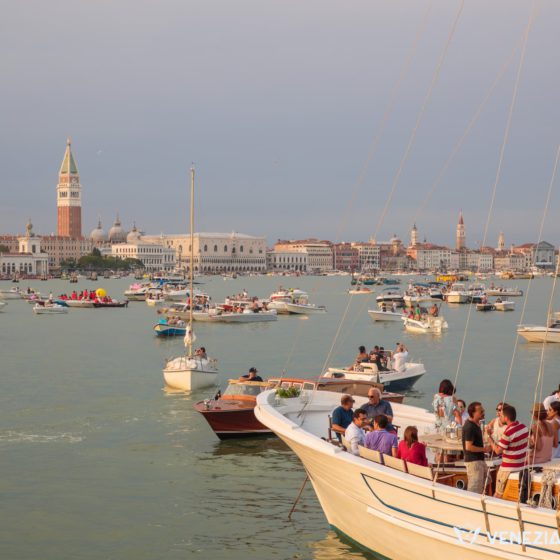
![Venice and its Lagoon [Video + Photos!] - Venezia Autentica | Discover and Support the Authentic Venice - Discover everything about Venice and its Lagoon, a wonderful gem that is a World Heritage Site since 1987 [includes Video + Photos!]](https://cdn1.veneziaautentica.com/wp-content/uploads/2020/06/venice-coronavirus-safe-560x520.jpg)
![Venice and its Lagoon [Video + Photos!] - Venezia Autentica | Discover and Support the Authentic Venice - Discover everything about Venice and its Lagoon, a wonderful gem that is a World Heritage Site since 1987 [includes Video + Photos!]](https://cdn1.veneziaautentica.com/wp-content/uploads/2020/03/beautiful-canal-Venice-560x560.jpg)
![Venice and its Lagoon [Video + Photos!] - Venezia Autentica | Discover and Support the Authentic Venice - Discover everything about Venice and its Lagoon, a wonderful gem that is a World Heritage Site since 1987 [includes Video + Photos!]](https://cdn1.veneziaautentica.com/wp-content/uploads/2020/03/venice-canals-rowing-560x560.jpg)
![Venice and its Lagoon [Video + Photos!] - Venezia Autentica | Discover and Support the Authentic Venice - Discover everything about Venice and its Lagoon, a wonderful gem that is a World Heritage Site since 1987 [includes Video + Photos!]](https://cdn1.veneziaautentica.com/wp-content/uploads/2020/03/venice-san-giorgio-church-560x560.jpg)
![Venice and its Lagoon [Video + Photos!] - Venezia Autentica | Discover and Support the Authentic Venice - Discover everything about Venice and its Lagoon, a wonderful gem that is a World Heritage Site since 1987 [includes Video + Photos!]](https://cdn1.veneziaautentica.com/wp-content/uploads/2016/10/all-that-you-need-to-know-about-the-venetian-rowing-regattas-in-venice-57-560x560.jpg)
![Venice and its Lagoon [Video + Photos!] - Venezia Autentica | Discover and Support the Authentic Venice - Discover everything about Venice and its Lagoon, a wonderful gem that is a World Heritage Site since 1987 [includes Video + Photos!]](https://cdn1.veneziaautentica.com/wp-content/uploads/2020/03/murano-island-venice-560x560.jpg)
![Venice and its Lagoon [Video + Photos!] - Venezia Autentica | Discover and Support the Authentic Venice - Discover everything about Venice and its Lagoon, a wonderful gem that is a World Heritage Site since 1987 [includes Video + Photos!]](https://cdn1.veneziaautentica.com/wp-content/uploads/2020/03/burano-houses.color-venice-560x560.jpg)
![Venice and its Lagoon [Video + Photos!] - Venezia Autentica | Discover and Support the Authentic Venice - Discover everything about Venice and its Lagoon, a wonderful gem that is a World Heritage Site since 1987 [includes Video + Photos!]](https://cdn1.veneziaautentica.com/wp-content/uploads/2020/03/boat-beach-sant-erasmo-560x560.jpg)
![Venice and its Lagoon [Video + Photos!] - Venezia Autentica | Discover and Support the Authentic Venice - Discover everything about Venice and its Lagoon, a wonderful gem that is a World Heritage Site since 1987 [includes Video + Photos!]](https://cdn1.veneziaautentica.com/wp-content/uploads/2020/12/IMG_20201117_154442-560x560.jpg)

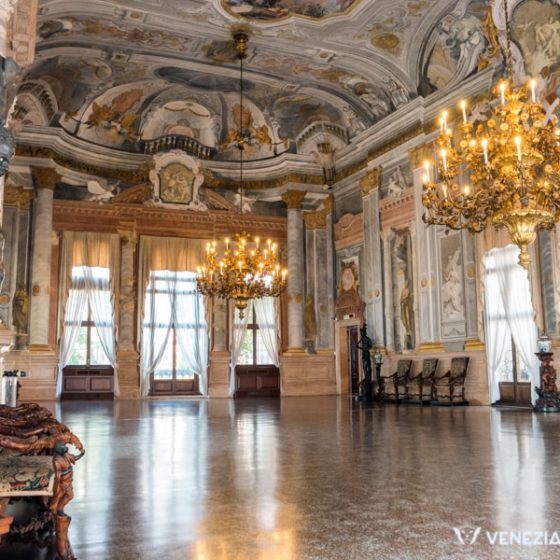
![Venice and its Lagoon [Video + Photos!] - Venezia Autentica | Discover and Support the Authentic Venice - Discover everything about Venice and its Lagoon, a wonderful gem that is a World Heritage Site since 1987 [includes Video + Photos!]](https://cdn1.veneziaautentica.com/wp-content/uploads/2020/12/palafitte-pellestrina-1-560x560.jpg)
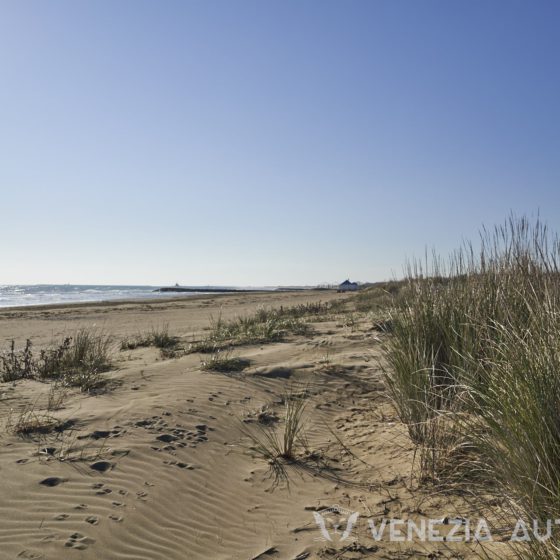
![Venice and its Lagoon [Video + Photos!] - Venezia Autentica | Discover and Support the Authentic Venice - Discover everything about Venice and its Lagoon, a wonderful gem that is a World Heritage Site since 1987 [includes Video + Photos!]](https://cdn1.veneziaautentica.com/wp-content/uploads/2020/12/LogoCC.jpg)
